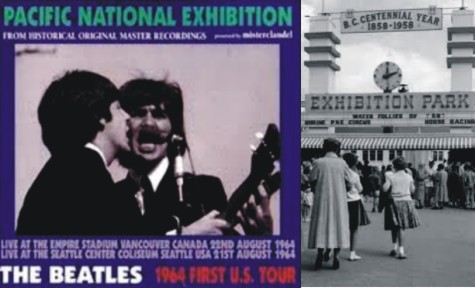
Appropriately enough for a part of the city that was founded on tourism and hotels, the former Hastings Townsite became home to one of the city's biggest attractions.
In 1908, a group of East End realtors got together to plan an exhibition, the precursor to the Pacific National Exhibition (PNE). They wanted to put on a show as impressive as the Royal Agricultural Show in New Westminsterbut that would be within the reach of a five-cent [street]car fare.
With an eye on the 160-acre Hastings Park, used for little more that horse racing since the province had granted it to the city in 1889, they asked both the City of Vancouver and the provincial government for startup funds. The city put a bylaw before voters, asking ratepayers to approve a $25,000 grant, but the voters said no. So did the province.
The premier, Mr. Richard McBride, candidly and frankly told the deputation who waited upon him that the government opposed the movement which it calculated would be destructive to the established Royal Agricultural Society at New Westminster, and that no assistance could be looked for from that quarter, recalled Vancouver Exhibition Association co-founder John James (J.J._ Miller, writing in the 1930s).
Instead the founders turned to private funds to raise the capital they needed to mount their show. Miller, who served as president of the exhibition from 1908 to 1921, bought the first $100 life membership, and co-founders Professor Edward Odlum and George McSpanddenboth East End realtorsbought life memberships numbers two and three. Eventually the co-founderswho also included realtor Thomas Duke and newspaper writer J. Field-Johnsonmanaged to raise $20,000.
A few months later, the city again asked voters to contribute the exhibition, and a bylaw for a $50,000 grant passed.
Money in hand, the exhibition's first board of managementwhich included Charles Woodward, founder of the department storebuilt a handsome show building on 60 acres of parkland leased from the city. Originally called the Exhibition Building, it was later renamed the Industrial Hall, and eventually the Women's Building. Located at what today is the corner of Oxford and Renfrew streets (it was demolished in 1938), it was an impressive looking building with columns, turrets and a half-dome ceiling over the front entrance.
The Exhibition Building opened in September 1910 with so many exhibits entered, organizers had to scramble to get pens for livestock and housed the poultry in a large tent.
Prime Minister Wilfred Laurier opened the fair with a gracious speech of goodwill and good wishes on a beautiful sunny day. A trotting race followed the opening ceremonies, after which Laurier took a walking tour of the exhibit and attended an afternoon tea, presided over by Miller's wife, in a large marquee on the grounds.
Some 68,000 people paid 50 cents each to attend that first exhibition, which tallied up a net profit of $8,825.
This far exceeded the wildest expectations of the promoters, and gave them renewed vigor, hope and encouragement, wrote Miller.
The provincial government did an about-face, with McBride sending a letter conveying his best wishes to the exhibition on its opening daytogether with a cheque for a $10,000 grant.
The Vancouver Exhibition soon rivaled those in Victoria and New Westminster. The latter, contrary to predictions, did not go out of business right away, but lingered until 1930.
Source: Vancouver, Stories of a City by Lisa Smedman


